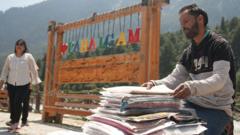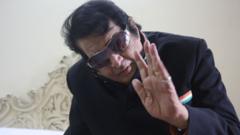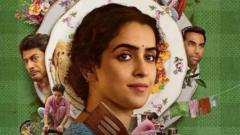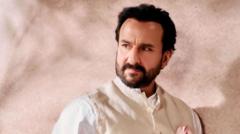This article explores the revival of the iconic film Sholay, highlighting its restored version which features its original ending and the ongoing impact it has had on Indian cinema and culture.
**Sholay's 50th Anniversary: A Cinematic Resurrection with Original Ending**
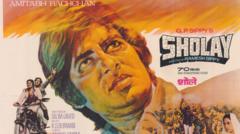
**Sholay's 50th Anniversary: A Cinematic Resurrection with Original Ending**
Restored and reimagined, Sholay returns to the screen as a cultural touchstone half a century later.
Fifty years after its initial release, Sholay, one of the most celebrated Hindi films, is set to return to theaters in a fully restored version. This epic event is marked by its world premiere at the Il Cinema Ritrovato Festival in Bologna, Italy, scheduled for this Friday. The restored version, which includes the original ending—previously altered due to censor objections—will give audiences a glimpse of deleted scenes from the 1975 classic directed by Ramesh Sippy.
With a stellar cast featuring Amitabh Bachchan, Dharmendra, Jaya Bhaduri, and Amjad Khan, Sholay has long been considered a cornerstone of Indian cinema. Its narrative, a good-versus-evil tale set in the fictional village of Ramgarh, showcases the lives of two outcasts hired to confront the notorious bandit Gabbar Singh, a role that cemented Khan's status as a formidable cinematic villain.
Upon its original release, Sholay captivated audiences, running for an unprecedented five years in Mumbai's Minerva theatre and garnering accolades like "Film of the Millennium" from BBC India. Dialogue from the film became woven into the fabric of Indian culture and continues to resonate in political speeches, weddings, and advertisements.
The film’s much-debated ending saw significant censorship during its first run, requiring a rushed reshoot to appease the authorities who found the original violence excessive. Years later, the archival process to restore Sholay was not without its challenges. The original 70mm prints were lost, and the remaining camera negatives showed signs of wear. However, thanks to collaborative efforts from the Film Heritage Foundation and the British Film Institute, the film was revitalized.
Shehzad Sippy, the son of Ramesh Sippy, played a central role in this undertaking, managing a request for restoration that unearthed valuable materials from both Mumbai and the UK. This led to a significant uncovering of the original camera and sound negatives, further ensuring a faithful retelling of the acclaimed story.
Interestingly, Sholay faced a challenging debut in theaters with lukewarm initial reviews and silence from audiences during viewings. However, strong word-of-mouth ultimately turned the tide, leading to massive box office success as viewers continually returned, drawn in by its stunning visuals and engaging narrative.
The film's legacy continues to grow; its characters and themes remain ubiquitous in popular culture, with a notable answer from Bachchan highlighting Sholay's timeless appeal: “The victory of good over evil and… most importantly, poetic justice in three hours! You and I shall not get it in a lifetime.” As Sholay finds its way back to the big screen with restored glory, it embarks on yet another journey into the hearts of cinema lovers around the world.



